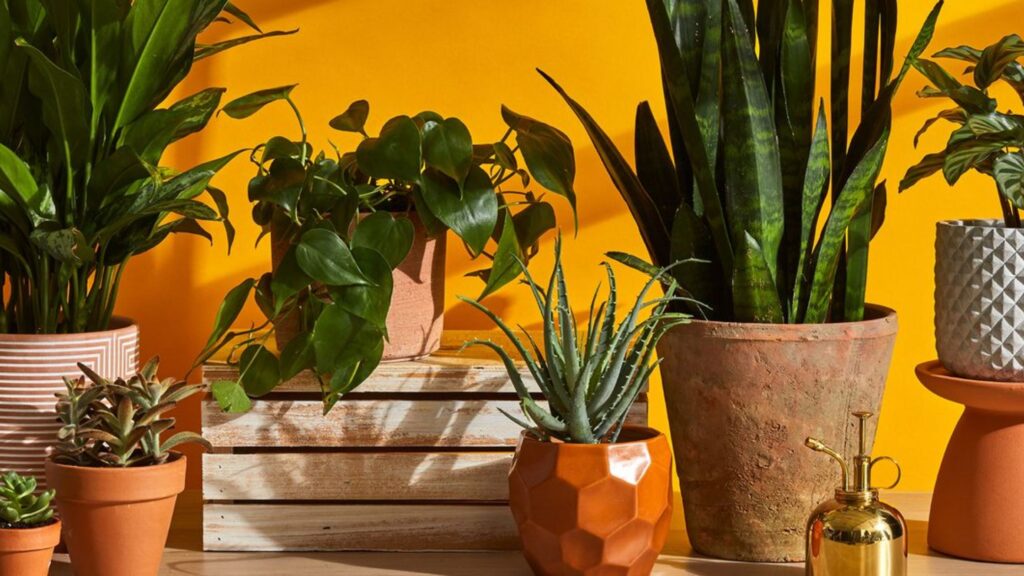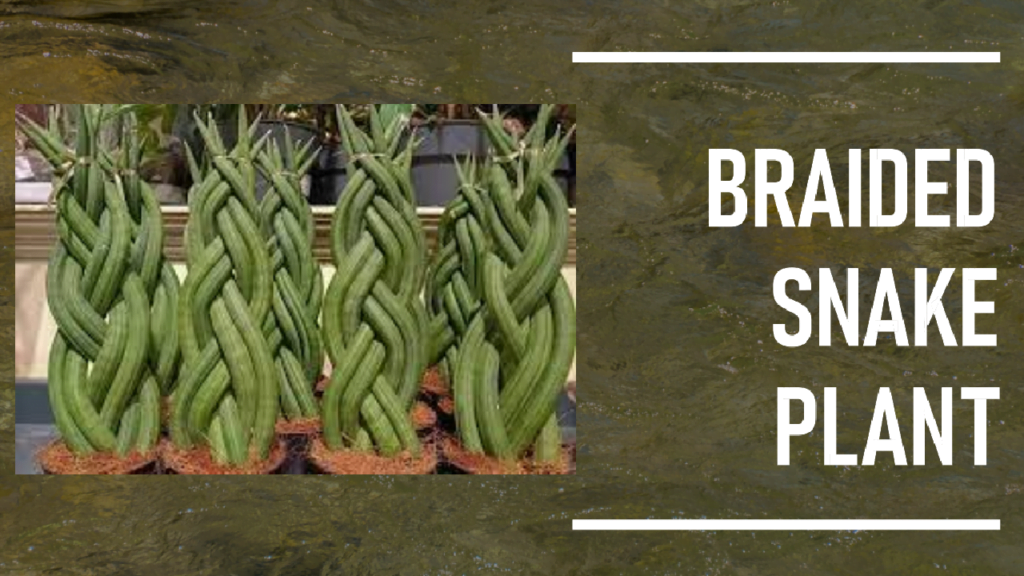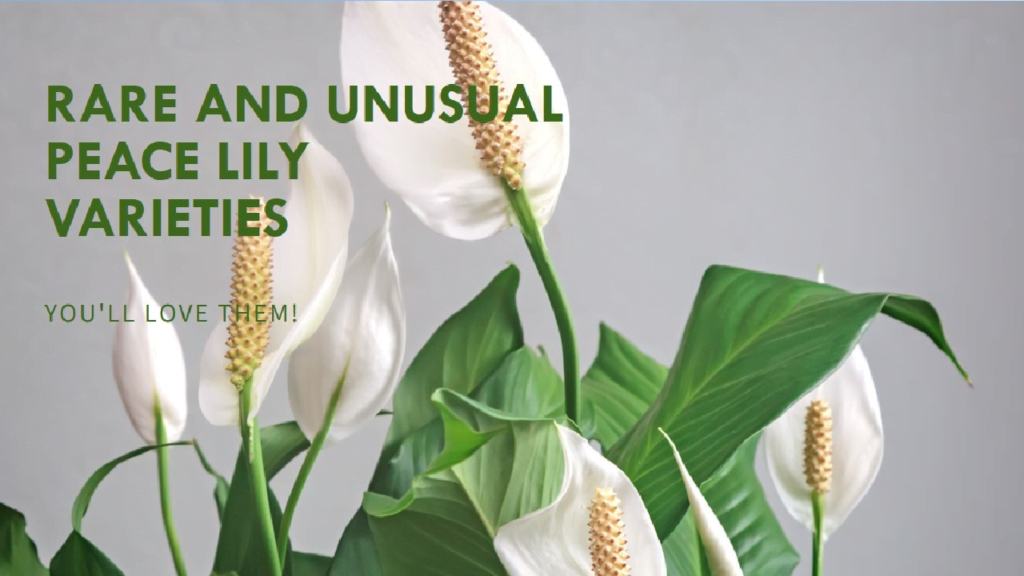There’s no doubt that indoor plants come in a lot of different varieties. However, I love small indoor plants the most. They are easy to maintain, require less space, and look cute on any desk or tabletop.
So, if you’re looking for cute indoor plants, you’re at the right place. Here, I am going to share with you the best 10 cute indoor plants. You can easily grow these adorable plants on your desk, tabletop, bookshelf, etc.
Don’t worry about their care needs either. It doesn’t take a lot of care for them to live happily.
All they want is the right amount of care. I will also share caring tips to help you provide the right amount of care to your tiny beauty. So, make sure you read all the way to the end. That being said, let’s explore amazing cute indoor plants.
Cute Indoor Plants To Make Your Room Look Adorable
With little effort, you can have small, attractive plants in your room and office. The following are some cute, unique indoor plants you can keep to add some cheer and greenery to your home.
1. NERVE PLANT (FITTONIA)

The nerve plants are gorgeous. Not the simplest plant to take care of, but unquestionably very rewarding. They need a lot of water and humidity, but with care, they can be grown almost anywhere.
2. MOTH ORCHID
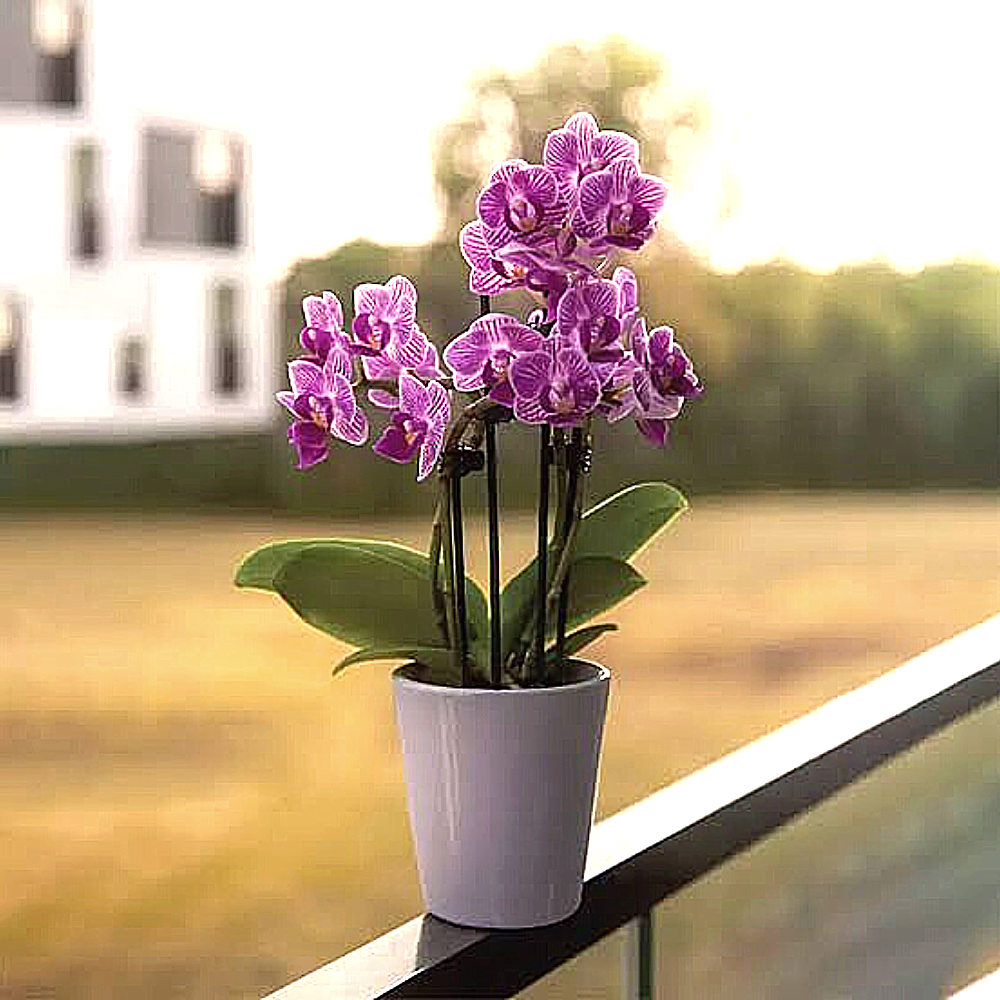
Take a moment to admire the Moth orchid’s stunning beauty. Definitely suggested to anyone looking for a lovely, compact, and adorable house plant.Unlike your heavy workload, this beauty will never let you down in your office.
3. FLAMINGO FLOWER (ANTHURIUM)
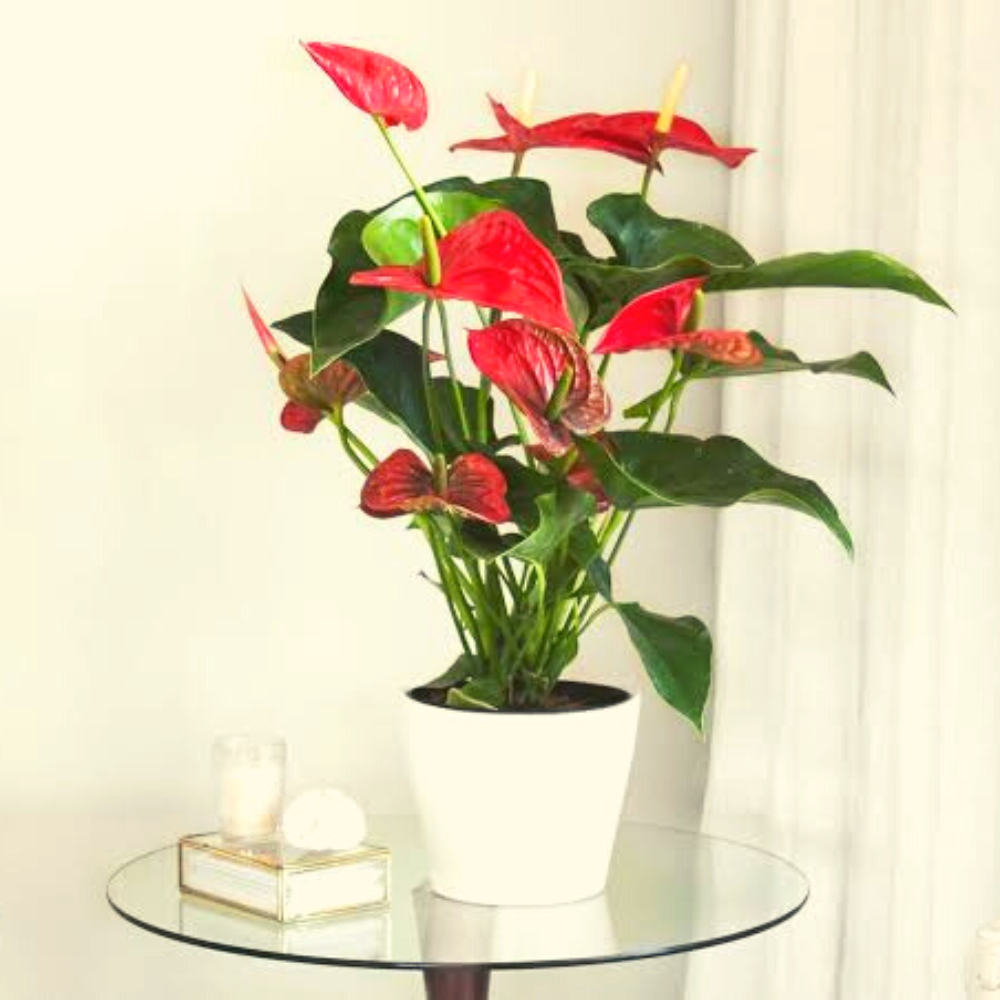
You can easily place an anthurium indoors on your desk, shelf, or windowsill. It has stunning colored blooms that last all year round. Its height ranges from 12 to 18 inches and requires little care.
4. ALOCASIA POLLY
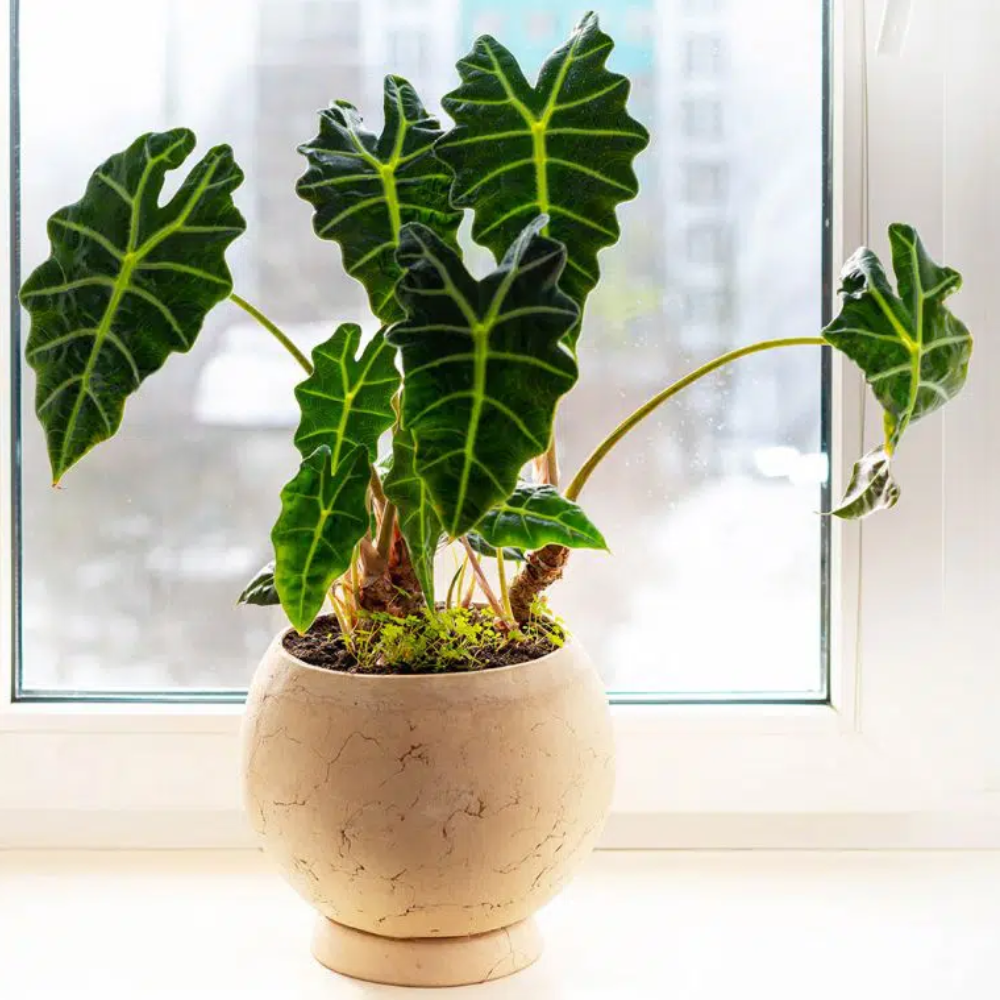
Alocasia “Polly,” a lesser variety of the Alocasia Amazonica hybrid, is known as an Alocasia hybrid. This plant produces glossy, arrowhead-shaped leaves with noticeable pale veins that contrast well with the dark green foliage.
5. BABY TOES PLANTS (FENESTRARIA RHOPALOPHYLLA)
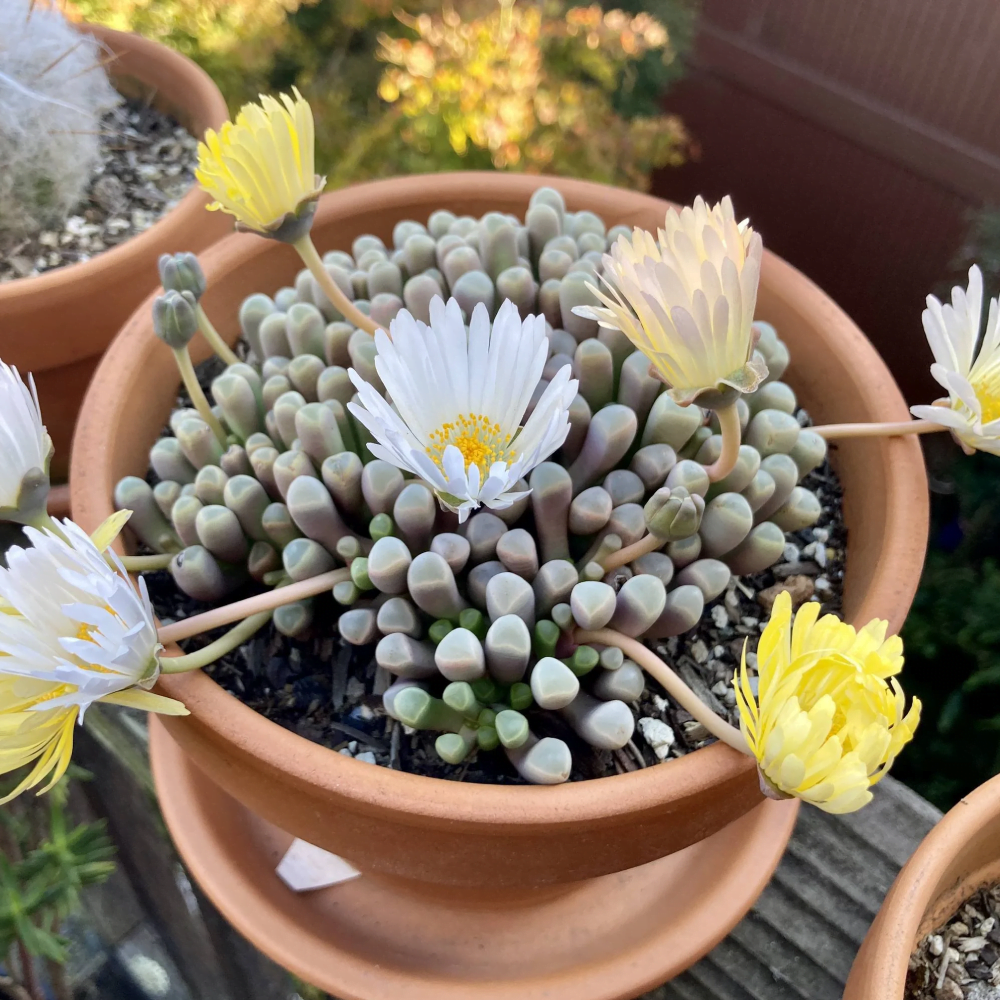
It’s easy to understand how Baby Toes gained its common name because it’s such a cute little houseplant. Small enough to fit in even the smallest places. An adorable indoor plant ideal for solo display or grouping with other succulents.
6. ECHEVERIA

Since there are so many varieties of echeveria, you’re sure to find something you like. In little pots, these succulents look great alone or with other echeveria or succulents.
7. PURPLE SHAMROCK (OXALIS TRIANGULARIS)
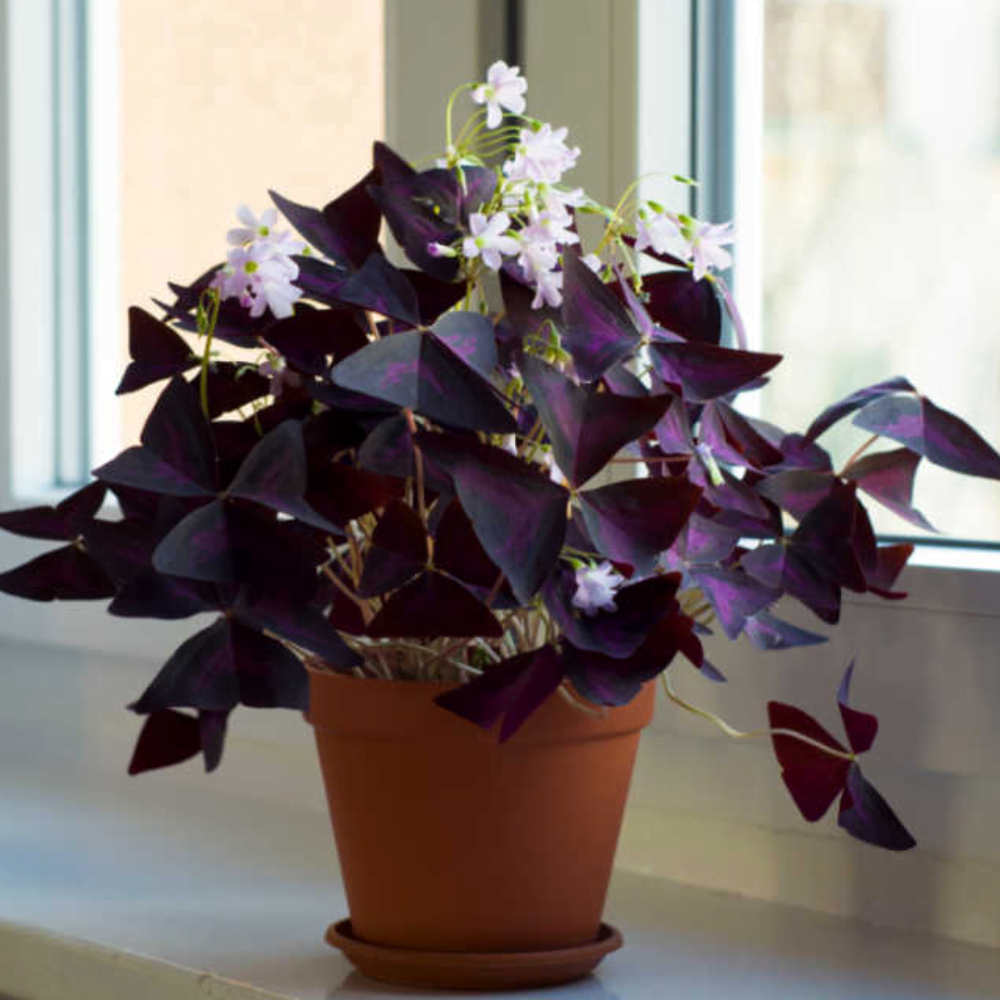
These cute indoor plants, often referred to as Purple Shamrock or False Shamrock, are relatively simple to grow. They can withstand a variety of lighting conditions and irregular watering. If neglected, they are easily revived and have a long lifespan.
8. LIVING STONE PLANT (LITHOPS)
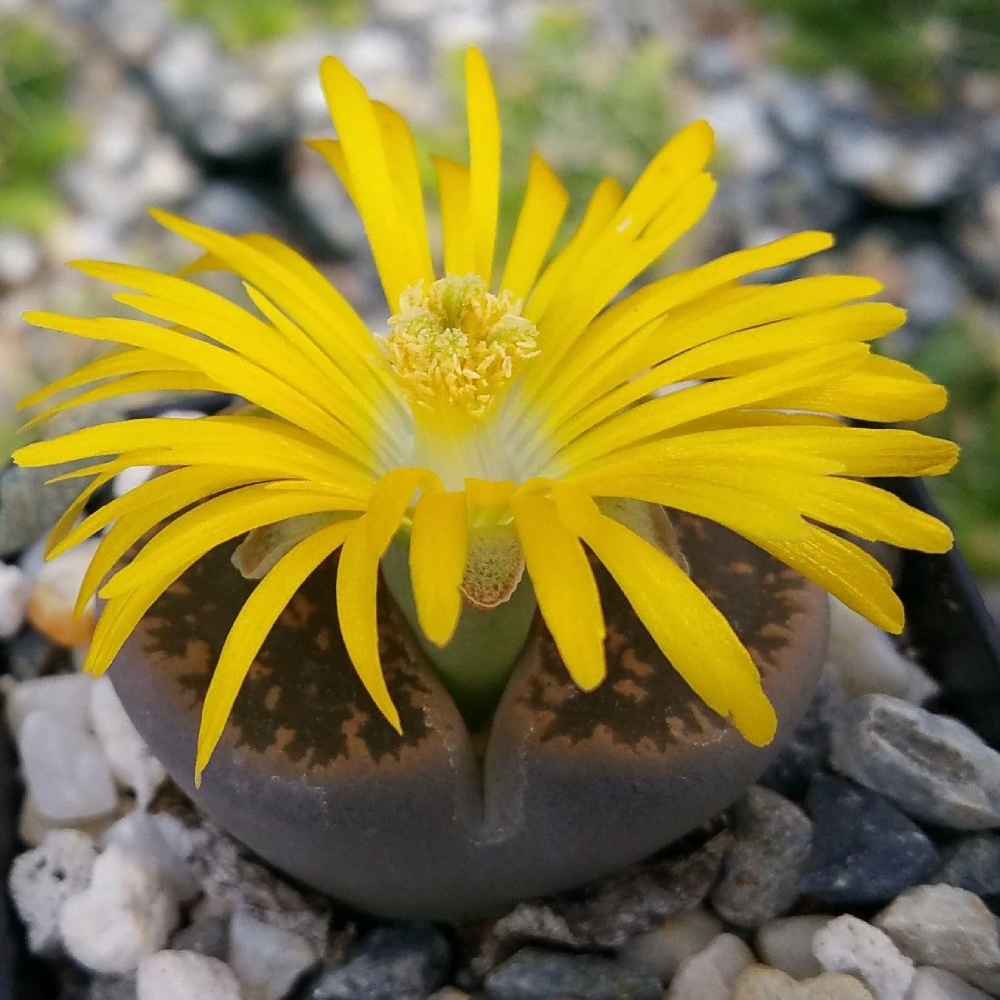
It’s a little unique, but you should consider this little houseplant to your collection. There are only two leaves on each lithops plant, and they resemble an animal’s foot in appearance.
9. FLAMING KATY

In winter and spring, you can easily find this winter-blooming succulent.It blooms in response to the short days of late autumn and early winter since it is a short day plant.
10. STRING OF HEARTS PLANT
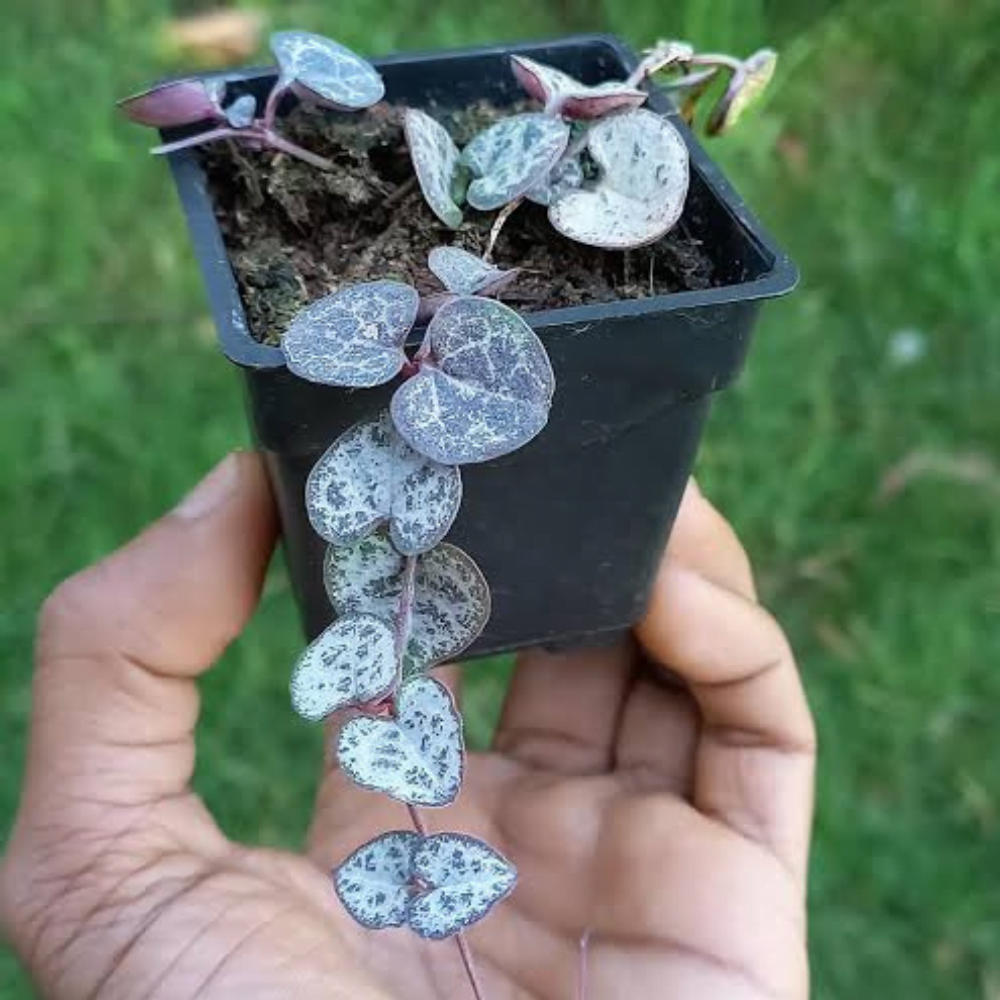
This charming little houseplant also known as the Rosary Vine or String of Hearts plant will grow vines and hang from its pot. It creates a charming display that is sure to catch the attention of your guests.
Did these cute ones catch your eye? If yes, then let’s get into detail about each one.
Top 10 Cute Indoor Plants
1. NERVE PLANT (FITTONIA)
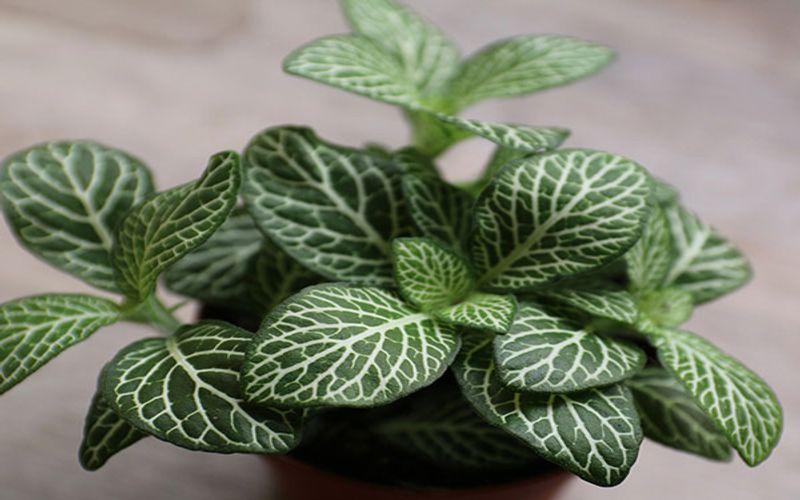
Fittonia, sometimes known as the nerve plant, is a striking indoor plant. It tlooks great in terrariums, hanging baskets, and container gardens.
Moreover, Nerve plants enjoy circumstances similar to the rainforest floor. As they are indigenous to tropical rainforests.
Fittonia plants do bloom occasionally. However, the buds are usually removed since they’re so insignificant compared to the gorgeous foliage. Hence, they’re considered a waste of energy.
| Placement | North facing window, Bathroom |
| Light | Bright, indirect sun |
| Water | Every 3-4 days |
| Temperature | 70℉ |
| Soil | Well drained peat based soil |
| Fertilizer | Balanced fertilizer |
| Toxic | No |
2. MOTH ORCHID
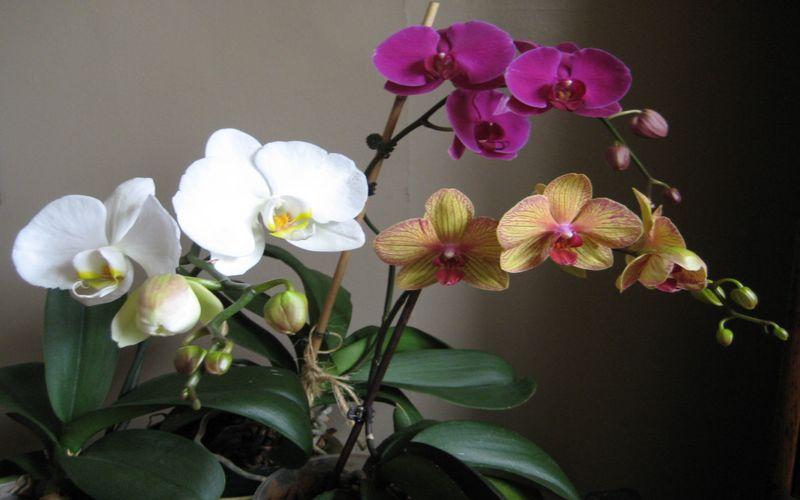
Although moth orchids are light feeders and don’t need a lot of nutrients on a regular basis, they do need some fertilizer to keep healthy.
Unless you’re careful, moth orchids are fairly easy to over-fertilize, which can result in nutrient poisoning.
Almost every orchid has an element that limits its growth, whether it’s light, heat, genetics, or nutrients. Once a phalaenopsis orchid has enough nutrients, adding more won’t hasten growth or improve the health of the plant.
| Placement | East or west facing windowsill |
| Light | Bright light |
| Water | Once a week |
| Temperature | 70 to 80 ℉ |
| Soil | Sphagnum peat moss |
| Fertilizer | Water soluble fertilizer |
| Toxic | No |
3. FLAMINGO FLOWER (ANTHURIUM)
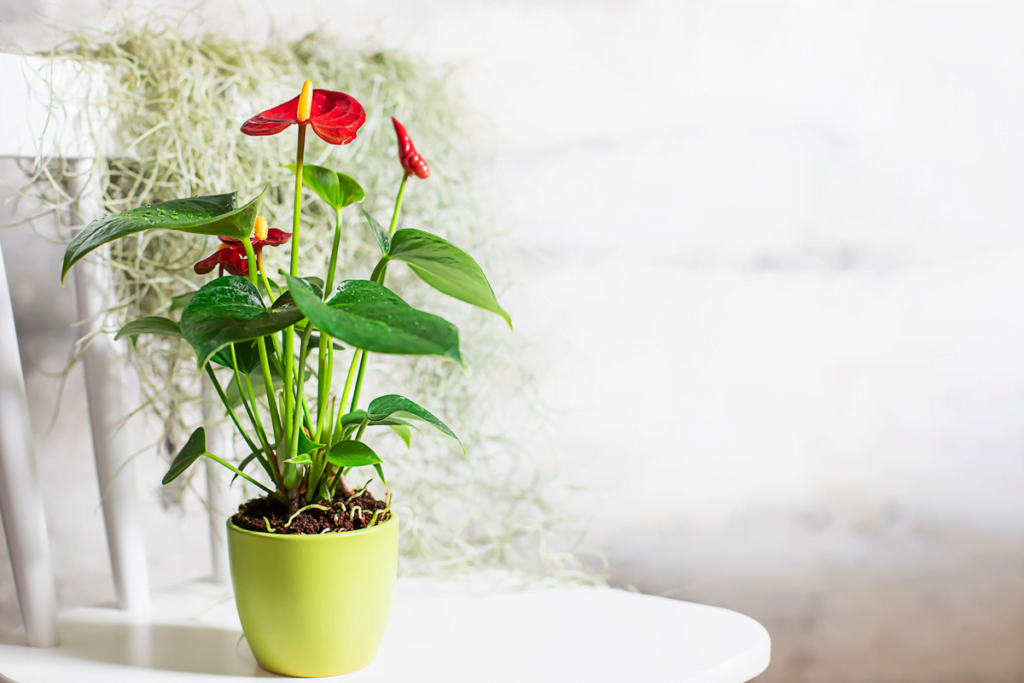
This magnificent tropical plant has glossy, dark-green, heart-shaped leaves. A constant display of vivid waxy, red heart-shaped spathes with yellow spadices complements flamingo flowers.
The flower endures for a full two to three months, on average. These cute indoor plants thrive best in indirect, high light sources, like a southern exposure, which is similar to their natural jungle habitat.
To bloom, they require good amount of light. Although this medium care plant needs a little more maintenance, the overall benefits are worth the work because it is so beautiful.
| Placement | Sunny windowsill |
| Light | Medium to bright light |
| Water | Once a week |
| Temperature | 70° to 75°F |
| Soil | Porous, well drained aerated soil |
| Fertilizer | Balanced fertilizer |
| Toxic | Yes |
4. ALOCASIA POLLY

It’s not hard to understand why Alocasia amazonica ‘Polly’ appeals to so many gardeners and indoor plant lovers. It is a remarkably lovely plant, and its leathery-appearing leaves make it very simple to identify.
The foliage is particularly striking and emerges from a central corm. It is arrow-shaped, very dark green, and has softer, creamy green midribs.
| Placement | West facing window |
| Light | Bright, indirect light |
| Water | Once a week |
| Temperature | 60 and 80 ºF |
| Soil | Light well draining soil mix |
| Fertilizer | Diluted complete liquid fertilizer |
| Toxic | Yes |
5. BABY TOES PLANTS (FENESTRARIA RHOPALOPHYLLA)

The Baby Toes Plant, also known as Fenestraria Rhopalophylla, is a cute, hardy succulent with tiny, tightly packed leaves that resemble clubs.
They may thrive in neglect and are well adapted to the natural environment of Namaqualand, making them quite simple to care for.
However, for them to continue to be charming, one must still understand how to properly cultivate one.
| Placement | South facing window |
| Light | Full sun |
| Water | Infrequent watering |
| Temperature | 65oF |
| Soil | Well draining cactus/succulent soil |
| Fertilizer | Any type of cactus and succulent food |
| Toxic | Yes |
6. ECHEVERIA
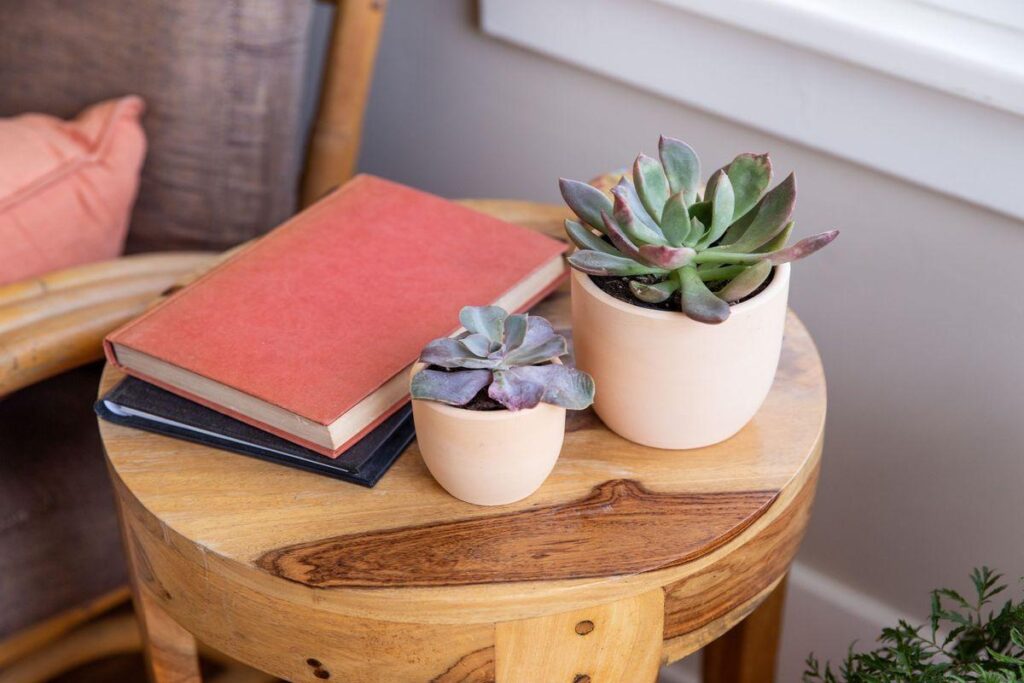
Echeveria can be cultivated in a variety of lighting situations. Although if grown in lesser light, it will stretch and develop leggy with time. This isn’t a big deal as they spread quickly. And your display may be refreshed quickly if necessary.
They’re small, so they can go pretty much anywhere in your house.
| Placement | South facing window |
| Light | Full sun |
| Water | Every one to two months |
| Temperature | 55-80°F |
| Soil | Well draining soil |
| Fertilizer | Do not need fertilizer |
| Toxic | No |
7. PURPLE SHAMROCK (OXALIS TRIANGULARIS)

Triangularis is the scientific name given to purple shamrocks for their triangle-shaped leaves that are deep purple and purplish-rose in the middle.
Although the plant’s vibrantly hued leaves steal the show, it also bears tiny, trumpet-shaped flowers in pink or white in the spring.
The blossoms endure for a number of weeks. Moreover, the leaves’ ability to open during the day and close at night is another characteristic.
| Placement | East or west facing window |
| Light | Full to partial sun |
| Water | 2-3 per week |
| Temperature | 60-75°F |
| Soil | Loamy or sandy soil |
| Fertilizer | Slow release or liquid fertilizer |
| Toxic | Yes |
8. LIVING STONE PLANT (LITHOPS)
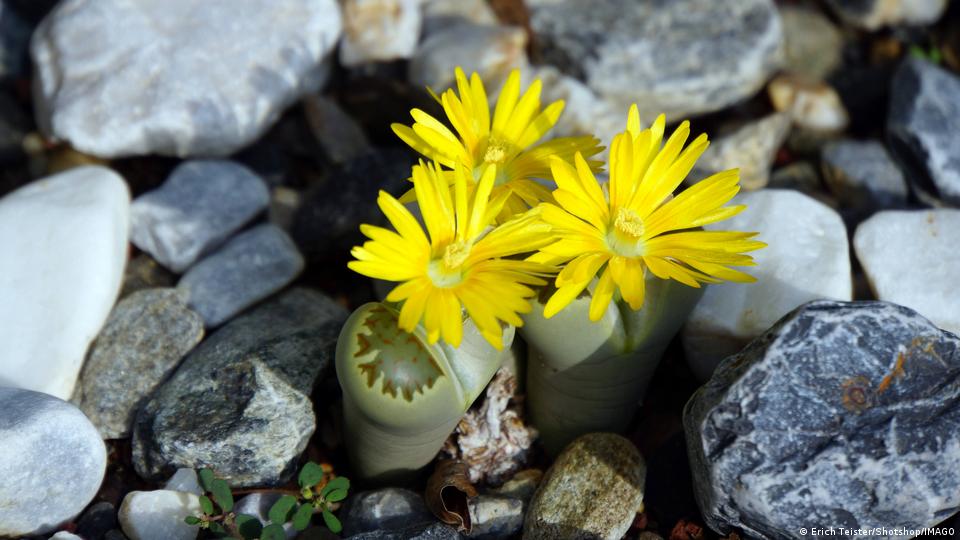
Their name derives from the fact that, in their natural environment, they grow partially buried in the ground and mix in with other stones.
You can grow this plant in a bright area, water it just a few times a year, and take pleasure.
Also, they can be grown in small pots alone or in groups. They come in a range of hues that can appear extremely lovely.
However, it’s crucial to select a potting soil rich in inorganic material. To practically ignore a Lithops plant is the greatest way to ensure its health.
Avoid the temptation to water them more than necessary. As overwatering is the one thing that will kill them.
| Placement | Balcony or near window |
| Light | Full sun to partial shade |
| Water | Once every 2 week |
| Temperature | 65-80 °F |
| Soil | Sandy, well drained |
| Fertilizer | Potassium rich fertilizer |
| Toxic | No |
9. FLAMING KATY
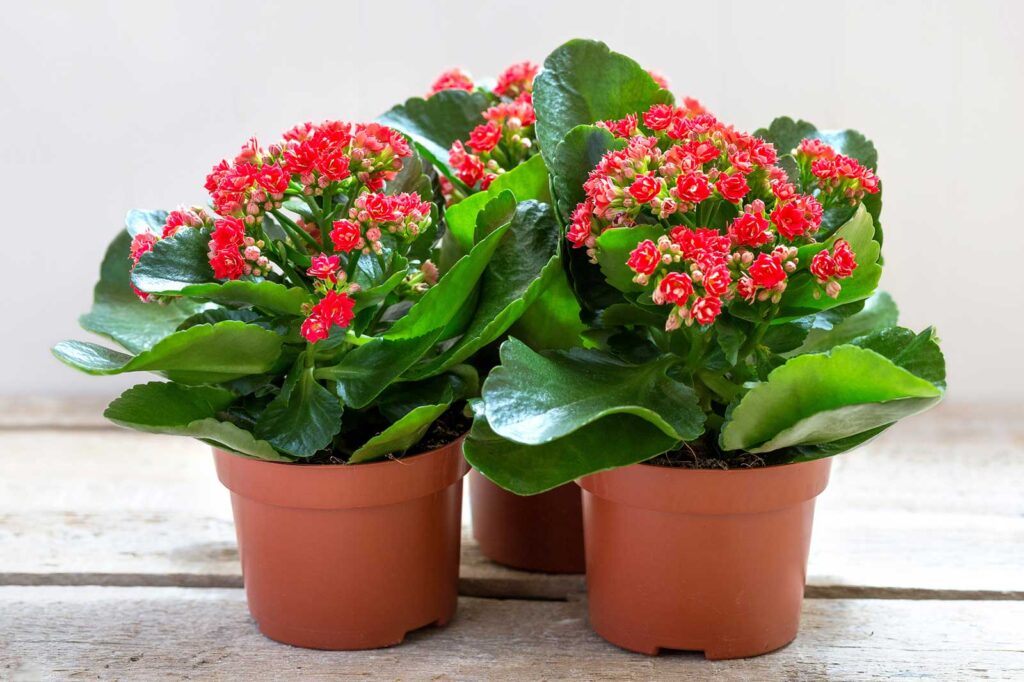
For this plant, if you remove the old blooms and give it lots of light, it can flower for several months.
Like other succulents, proper drainage and sparing but careful watering are essential. It is available in a variety of hues, such as red, orange, yellow, and white.
The majority of people perceive kalanchoe as an annual and discard it once it has finished blooming. Yet, with the appropriate conditions, you can easily get it to blossom again.
| Placement | Sunny Windowsill |
| Light | Bright light |
| Water | Once every week |
| Temperature | 65 to 68 °F |
| Soil | Sandy loam |
| Fertilizer | Liquid Fertilizer |
| Toxic | Yes |
10. STRING OF HEARTS PLANT

Along the vines, this plant’s adorable heart-shaped leaves develop in pairs every few inches. The attractiveness of this unusual houseplant is further enhanced by the leaves’ delicately patterned surface and light pink underside.
There are many ways to showcase this gorgeous plant in your house thanks to the individual vines’ potential to grow to lengths of several feet. Although they may tolerate some neglect, a string of heart plants like lots of light and little water.
| Placement | South or east facing window |
| Light | Bright indirect light |
| Water | Once or twice a week |
| Temperature | 60 to 80°F |
| Soil | Well drained, cactus potting mix |
| Fertilizer | Cactus suitable fertilizer |
| Toxic | No |
FAQS
Q1. What are the most adorable indoor plants?
Ans. The two most adorable plants are anthuriums and nerve plants.
Q2. What is a good indoor plant to gift?
Ans. The cutest plants to give as gifts to loved ones are orchids, Flaming Katy, and Echeveria.
Q3. What small plant is good for indoors?
Ans. Anthurium, Baby toes and Echeveria are some of the best small plants for indoors.
Q.4 Are there any plants that stay tiny?
Ans. The nerve plant is a beautiful teacup plant with simple beauty. Its striking contrast of white veins and green leaves will enhance any terrarium. It grows slowly and does well in mini gardens.
CONCLUSION
All of these cute indoor plants provide a adorable touch to your room.Moreover, they are an eye candy for you at your workplace.
Echeveria, Baby Toe Plant, Living Stone Foot, or Flaming Katy are the best plants for tiny spaces. Additionally, if you desire that sweet and floral beauty, choose Moth Orchid, String of Hearts, or Purple Shamrock.
Also, don’t forget to follow the care tips given for each plant. Once you follow the right amount of care, your tiny plant will keep thriving.
So, what are you waiting for? Get your tiny beauties today and adore your space. Also, Let me know which plant you think is the cutest in the comments below.
Related Articles
- 15 Best Plants for Front Door Entrance India | Auspicious plants for front door
- 10+ Money plant Benefits That Will Make you Keep It In Your House
- Are Spider Plants Toxic to Cats?- 4 Ways To Prevent Your Cats From Eating Spider Plants.
- Best Plants for the House – 8 Top Apartment Plants That You Can’t Miss
- How to Braid Your Snake Plant: Tips and Care Guide
- 20+ Rare and Unusual Peace Lily Varieties You’ll Love



